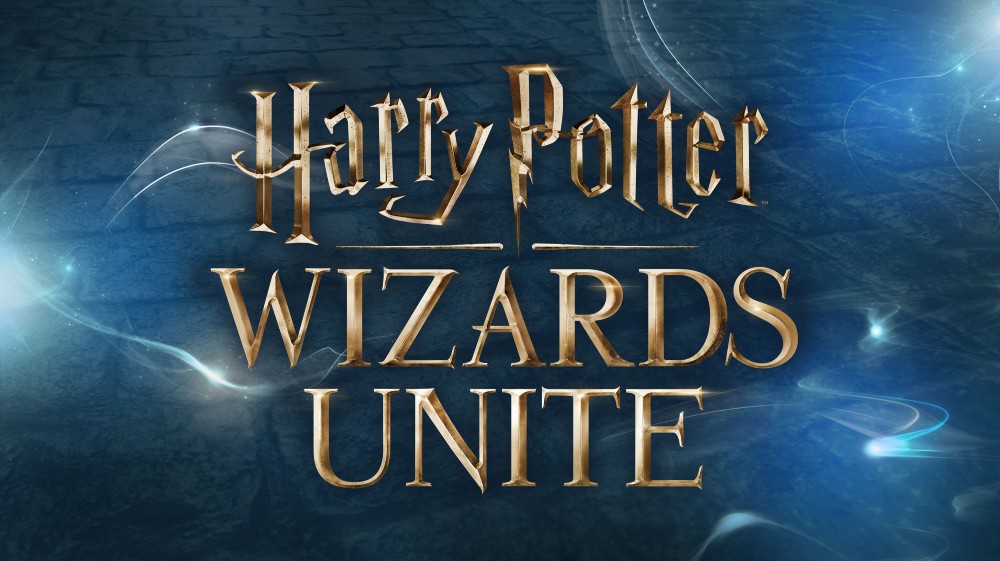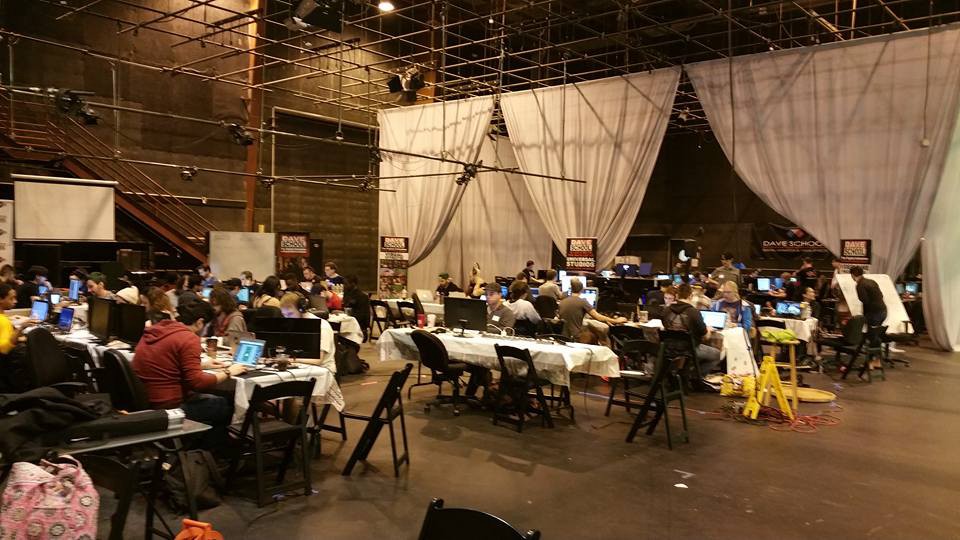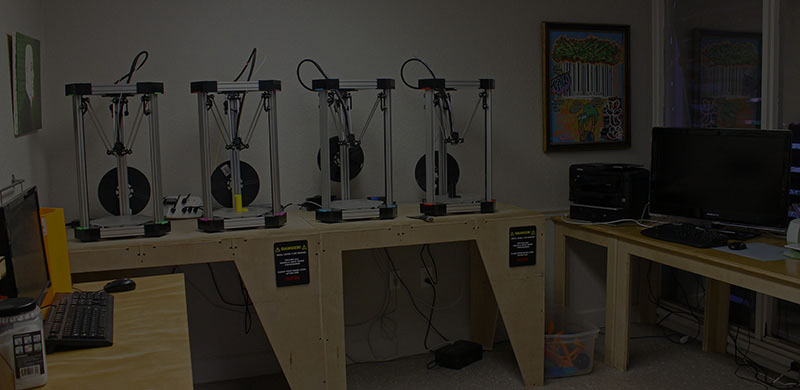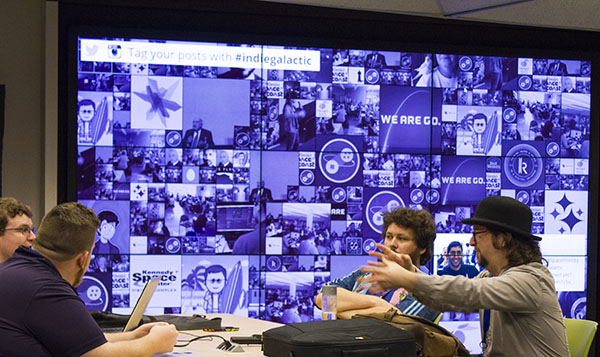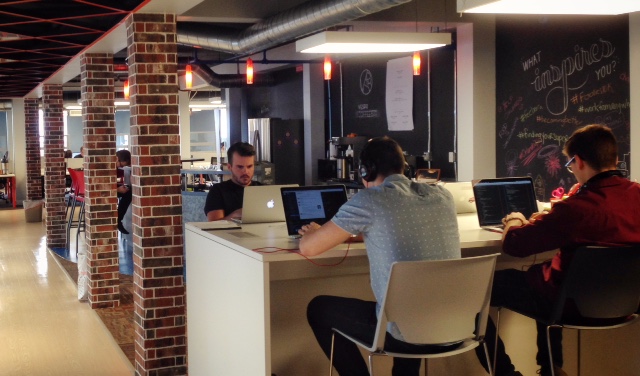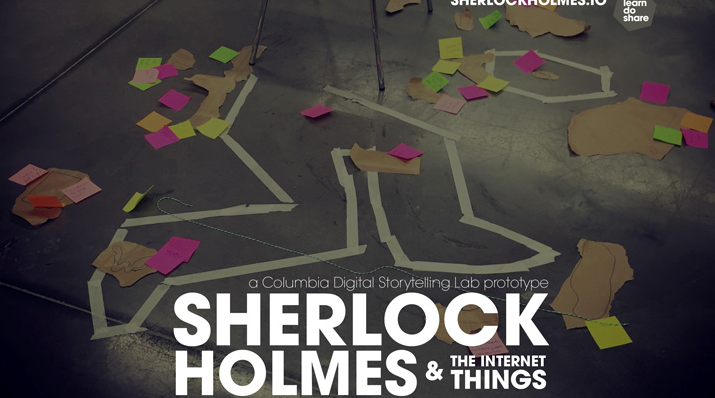The Magic of Augmented Reality: Harry Potter & Wizards Unite
There’s already a kind of magic about augmented reality: in being able to alter our usual surroundings, to add mythical creatures, environmental effects, or interactive art. It makes perfect sense, then, that the next big mobile AR experience will be based in the wizarding world beloved by so many, including myself.
I grew up along with Harry Potter. I started reading the books when the main character was only a few years younger than I was, and I learned about life alongside him. Each book was a guide, a friend, an inspiration. I’ve re-read the series every other year or so since, and each time I find new meaning in it. There is great wisdom in those pages, and also great fun.
This would have been enough to excite me about the recent announcement of Niantic Labs’s next big location-based mobile AR game, but I also happen to be an AR researcher and a project manager for AR projects, so I’m doubly excited from a technology perspective. It will be interesting to see how the format that gained such widespread, enthusiastic interest through Pokemon Go is further developed with another hugely popular creative property.
There was a great amount of speculation after Pokemon Go about whether or not the mobile, location-based AR game format would take off- if other groups would be successful in at least partially replicating Niantic’s success. So far no one has even come close, so Wizards Unite is likely to be the next big game of this type. Here’s what else we know about it so far.
Firm Foundation of Fact

According to Niantic’s public statement and information on J.K. Rowling’s Harry Potter news website, Pottermore, features will include: “searching for magical creatures”, “bumping into iconic wizarding world characters”, the ability to “cast spells” and “discover mysterious artefacts”, and the ability to “build up your very own, illustrious wizarding career”. What does all this mean from a gameplay perspective? Well, we can map some of these features directly onto gameplay seen in Pokemon Go and Niantic’s other location-based mobile AR game, Ingress.
Searching for magical creatures will likely be similar to searching for Pokemon in Pokemon Go. Map data collected over the course of Niantic’s previous games will provide hot spots for creature and possibly special item spawning. These creatures are likely to include those from the Fantastic Beasts and Where to Find Them book and movies. The second movie is set to be released next November- we’ve just found out that it will be called Fantastic Beasts: The Crimes of Grindelwald.
Announcements for the game also include references to “bumping into iconic wizarding world characters along the way”. There is no direct equivalent to this in Pokemon Go, since the focus is on the Pokemon rather than any characters in the series. The activity might occur in some equivalent of the gyms, though, with players dueling well-known wizards from the Harry Potter world lore.
One big question is whether or not Wizards Unite will improve on Pokemon Go’s core gameplay mechanic, which involves flicking a Pokeball at the target and hoping skill level will enable the catch. There are a few ways this mechanic could be developed with spell casting, and we can find at least one example in some existing Harry Potter interactive tech.
There is a special interactive experience at Universal Studios’s Wizarding World that allows visitors to purchase a special wand that interacts with sensors around the park to “cast spells”. These spells bring to life static details around the area. In a window, curtains open to reveal dancing trolls. With a another wave of the wand, shrunken heads in Knockturn Alley begin singing a creepy song.
While these magical happenings actually result from the activation of sensors that recognize the special interactive wand, there is a map of locations for each experience that details wand movements and incantations “necessary” for each one. When I visited the parks with my young nephew he enjoyed trying to get each spell just right, and I had fun playing along. Wizards Unite might employ a similar game mechanic, with each creature subdued by a certain type of spell (swish and FLICK).
It’s also possible that the game will make use of the smartphone’s internal gyroscope that allows it to identify orientation and movement to turn the phone into a wand, though I think this is less likely. It seems unwise to encourage motion that could cause people to drop their phones, and players would have to take their eyes off the screen to create the movement.
There is one additional area of gameplay we can expect that I’m particularly excited about, partly because I was one of those players who dropped out of Pokemon Go before the feature was introduced. It has already been announced that Wizards Unite will include multiplayer questing, likely patterned after Pokemon Go’s raid battles. The introduction of this mechanic, along with changes to the gyms, were the two primary areas of improvement to Pokemon Go based on feedback from users.
I love collaborative gameplay, and this feature will likely involve players joining forces to take down more powerful monsters. It will make for some great social interaction- when Pokemon Go first launched our work team would make lunch trips to different restaurants to find new Pokestops. It was also a good excuse for a group happy hour at a new place. This blend of real-life interaction and virtual gameplay is one of the most exciting elements of the location-based game type, and the addition of multiplayer gameplayer makes it even better.
Thickets of Wildest Guesswork
One big outstanding question relates to the setting for the game. We haven’t yet received any details about what creatures and characters we can expect to meet, though it is very likely that Fantastic Beasts will feature prominently. However, it’s hard to imagine that a Harry Potter game expected to receive such widespread attention would not actually include any of the characters in the Harry Potter timeline, or Harry Potter himself.
Not that Fantastic Beasts lore wouldn’t make for great game content, but it is certainly less popular than the characters and storylines found in the main book series. Fantastic Beasts takes us back in time to the 1920s, when Gellert Grindelwald was rising to power. But is it possible that we’ll see a timey-wimey situation where characters from the next generation also somehow appear? The books do find a number of ways for characters to travel through time.
My next question relates to information that I expected to hear but did not, and that is the incorporation of houses. Ingress divided players into two teams that competed for control of geographical areas, and Pokemon Go divided players into one of three teams that competed for glory. But there hasn’t been any mention of a similar division in Wizards Unite, even though a natural one exists (and one that Harry Potter fans already enjoy). Yes, I’ve taken the house quiz on Pottermore, and I’m a Ravenclaw.
Perhaps one reasons this hasn’t been mentioned is that if the setting for the game is the one explored in Fantastic Beasts, then Hogwarts houses wouldn’t apply. However, over the past year or so J.K. Rowling has released short stories and information relating to an American equivalent of Hogwarts, Ilvermorny, and its four houses- Thunderbird, Wampus, Horned Serpent, and Pukwudgie.
These houses haven’t yet been explored in the movies, but J.K. Rowling has provided some lore about the American wizards on Pottermore. Perhaps, if the setting for the game ends up being 1920’s America, we’ll see these houses factor in. It’s possible that if this is the plan, it won’t be announced until some marketing is done about the houses, so that players have a better idea of what they’re being sorted into.
This Isn’t Just Any Manky Old Boot

There’s one last bit of news to mention, and that’s the subtle announcement, largely lost in excitement over new AR adventures, of Portkey Games.
Along with the announcement of Wizards Unite, it was announced on Pottermore that the game will be released under a new Warner Bros label, Portkey Games, that will include a “series of games inspired by J.K. Rowling’s Wizarding World”. The website notes that these will include both mobile and console games.
Now, there was a lot to love about the LEGO Harry Potter games, but the world could use a few new Harry Potter console games. Maybe we’ll also see a Harry Potter VR game, which has been on my wish list for a while. I wouldn’t mind a chance to explore Hogwarts as a new student or to keep watch over my shoulder for spiders while on a trip through the Forbidden Forest.
Now that the decision has been made to venture into a new form of media with the Harry Potter story- augmented reality- it will be interesting to see if Portkey Games explores other new game types.
That Flighty Temptress, Adventure
I’m very excited about this game announcement, and I look forward to following along as more information comes out.
Thanks to all of the exciting wizarding news of the last week or so, my vision of the future now includes people dressed as wizards walking around downtown waving their phones at street lamps and benches. Or maybe there will be wizards trying to dress as muggles, walking around in kilts and raincoats, joining forces to collaboratively defeat a basilisk hiding in the local park. The cosplay opportunities are endless. It will be like some great, magical street art performance based on one of my favorite fictional worlds.
Go ahead and talk about all the hype around Pokemon Go and how the game will tie into the next movie deal and the franchise’s cross-generational appeal. I’m far more interested in strategizing how I’m going to track down nifflers at work.
About me:
I’m a producer at Magic Leap in Plantation, FL. I dabble in experience design and storytelling for emerging technology, and I’m pretty good at managing development for interactive entertainment software. Connect with me on LinkedIn: /necolepynn.
Augmented & Virtual Reality Trends: Conversations from OrlandoiX 2017
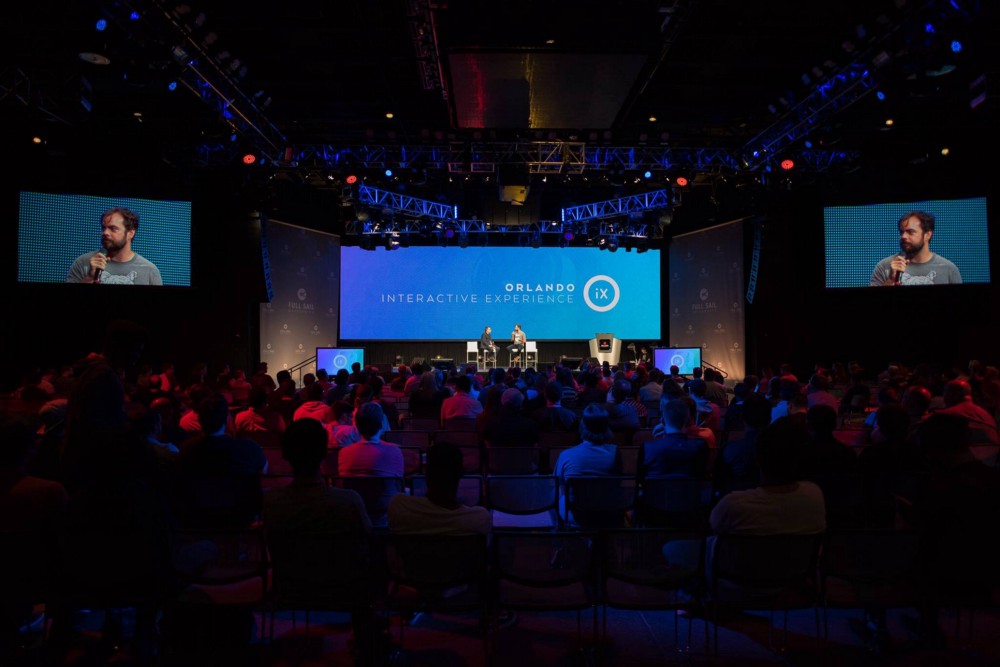
Virtual and augmented reality technology has made some exciting leaps over the past year as broader consumer adoption and new tools have inspired companies to invest time and resources in creating better virtual experiences.
This was the focus of the activity at this year’s OrlandoiX 4-day digital festival, held at Full Sail University in Winter Park. Conversations centered around the hardware, software, and business of VR, AR, and video games. The event featured presenters and panelists who are working with these rapidly-evolving technologies, highlighting evolving best practices and the most important of the many recent advancements in the field.
The festival took place in two parts, with a two-day conference on Thursday and Friday and a tech and gaming expo on Saturday and Sunday. Additional activities included a kick-off party hosted by the Orlando VR/AR Meetup and indie game association Indienomicon, as well as nightly tournaments in games like Super Smash Bros, Hearthstone, and FIFA.
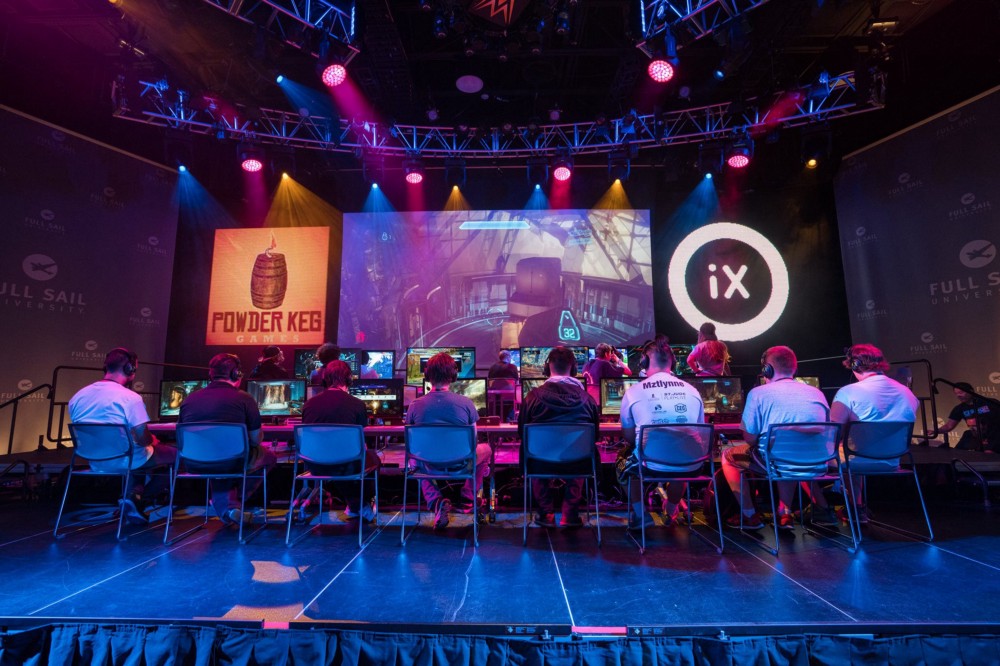
This year the annual Thursday and Friday conference featured a lineup of heavyweights in the technology industry, including keynote speakers from Microsoft and HTC Vive. Topics included the development of social VR, live streaming of 360 video, business development and investment in VR, and the evolution of augmented reality.
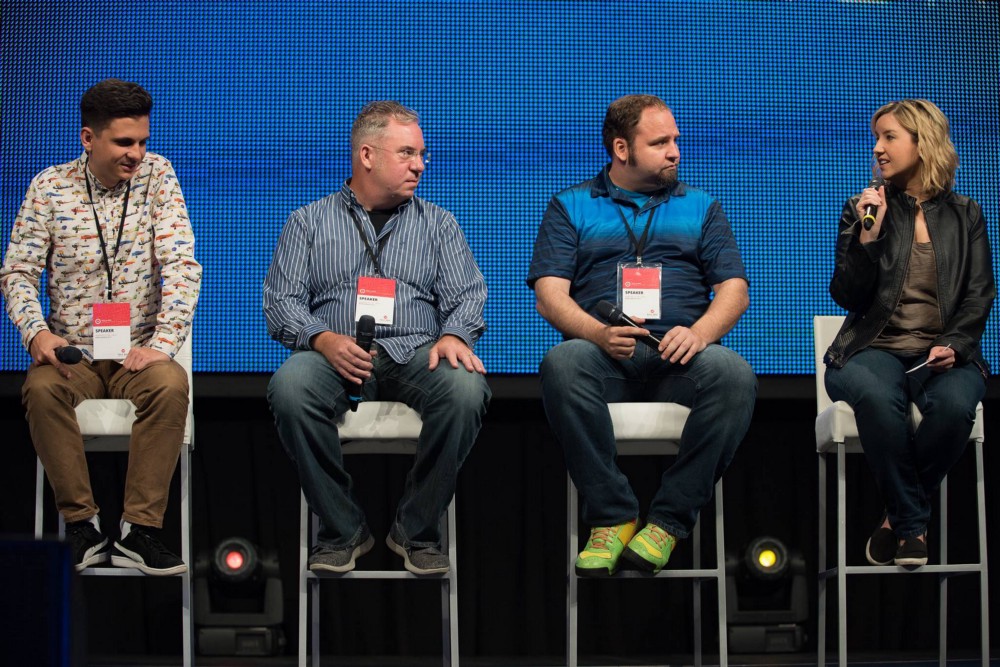
I had the chance to moderate several panels this year, as I have in previous years, and over the course of the festival I found that, while what was happening on stage was fascinating, it was complemented by the conversations happening offstage, in the green room, or in the crowds. These conversations are representative of conversations happening nationally and internationally around the industry, and I wanted to highlight a few of the most interesting topics I heard.
Apple’s AR Kit
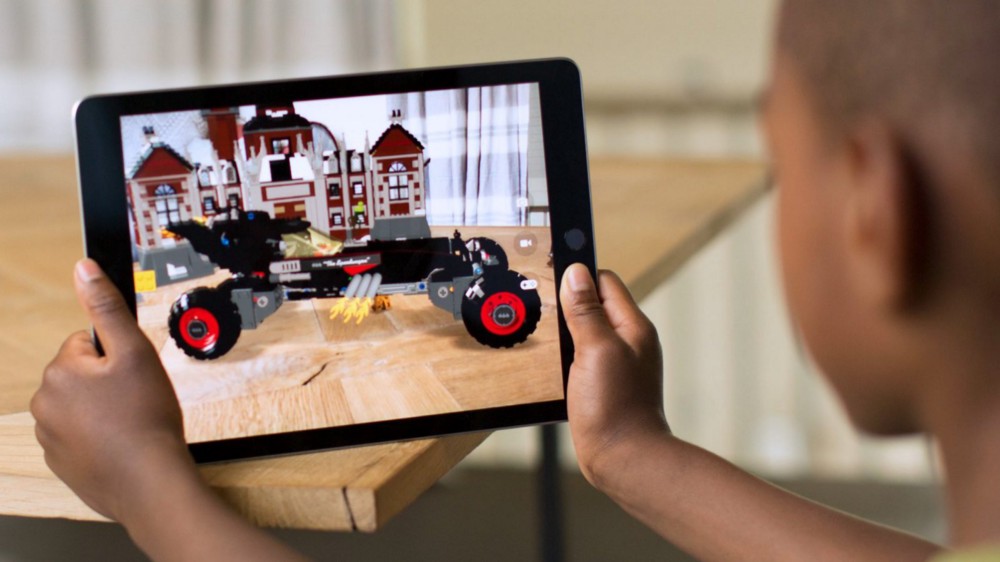
Before Apple’s developer conference (WWDC) in June, everyone was wondering whether or not Apple would have any big announcements relating to virtual and augmented reality. Well, they sure did, and it was a hot topic of conversation at iX. Apple’s ARKit, a development tool that supports AR for Apple’s devices, has advanced the capabilities of mobile AR with improvements in areas like depth sensing, 3D space analysis, lighting, and accuracy of movement. These are all areas that are important to the evolution of AR development.
It’s also interesting from a business perspective. Over the last few years, Google and Samsung have led the way in mobile VR. Toward the end of last year, Google launched the Daydream platform, expanding on the proven succcess of Google Cardboard. Samsung has recently been developing hardware and software for mobile VR with improvements to its Gear VR headset and VR platform.
Apple has been very secretive about its plans in the space, revealing little info until recently, when the company skipped right over VR and went straight to a technology that is even further out in terms of its full potential- augmented reality. Apple’s patent filings and job postings have revealed the company’s interest in VR/AR, but the recent move to provide developers with tools to create quality AR experiences has many people very excited.
The potential of AR is widely acknowledged, but only Pokemon Go has so far managed to reach a broad audience, and that was largely attributable to its proprietary Maps technology, the data set it collected during Niantic Labs’strial AR experience called Ingress, and the name recognition and player base of the Pokemon brand. There’s also the fact that much of the gameplay appeal was due to its incorporation of location-based technology and not necessarily its AR components. Many people were turning off the AR to save battery life once they had experienced the feature. So there is a big question hanging over the technology- what kind of experience will take off next, and what will it look like? The easier creating the software is, the sooner we’ll find out.
AR Kit is already being used by developers to create some next-level AR. For a peek into the future, check out the work being done by Peter Jackson’s AR company, Wingnut AR.
The evolution of design principles for VR and AR
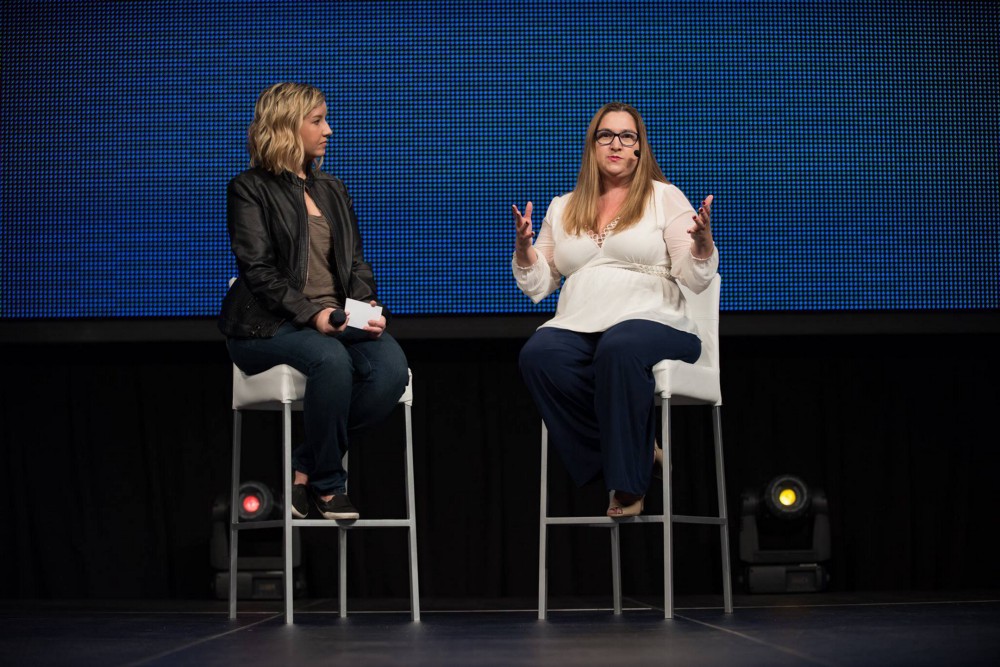
As a researcher in user experience and storytelling for AR and VR experiences, this is a subject that’s close to my heart. My favorite part of this year’s conference was my fireside chat with AR/VR designer and evangelist/futurist Cathy Hackl on this topic.
With the release last year of a range of accessible, lower-cost consumer VR headsets, including the Oculus Rift and HTC Vive, we began to see an explosion of fun, interesting, scary, odd, and beautiful VR experiences. This first wave of experiences developed for a broad audience created a foundation for a new form of art, and as designers and developers become more comfortable with the technology and the initial challenges of VR software development, they’re able to focus more on the art of the medium, to start pushing boundaries and identifying new ways to apply evolving design principles.
Artists can now reference previous experiences in their designs, pull from the best of them, and add ideas they’ve had bouncing around in their heads. At the conference this came out in many conversations. One point made by a speaker from Microsoft related to the inherent trust between a designer and a user of the tech. The deeply immersive nature of the technology allows for a deeper level of engagement and emotional connection. VR has been proven to increase memory retention and empathy. But it can also enhance fear and emotional distress. Designers have a responsibility to use that connection with care.
Use it they should, though. Some of the best experiences I’ve had in VR have made use of this emotional connection to draw me out of my comfort zone. There have been plenty of haunted house experiences, which will only improve. There’s a lot of potential to extend this type of design to create virtual escape rooms. One of the best- and strangest- experiences I’ve had was VR Accounting, produced by the some of the creators of the popular show Rick and Morty. I did terrible, terrible things. And it was great. This emotional connection can also be helpful in the educational and therapy realms. Researchers are using VR to help people overcome their greatest fears, deal with trauma and PTSD, and treat chronic anxiety and depression.
Over the course of iX there were also many conversations about the evolution of design for gaming. One of the most interesting elements of Pokemon Go was its combination of gameplay elements- including the discovery/ gathering mechanic, location-based tracking of game objects, and battle mechanic (which left a lot of room for improvement). There are plenty of other game types left to be explored. With the increasing activity in mobile AR, we may soon see new game types being developed- augmented reality MMORPG, anyone?- and new creative experiences of all sorts.
The economic future of VR is mobile
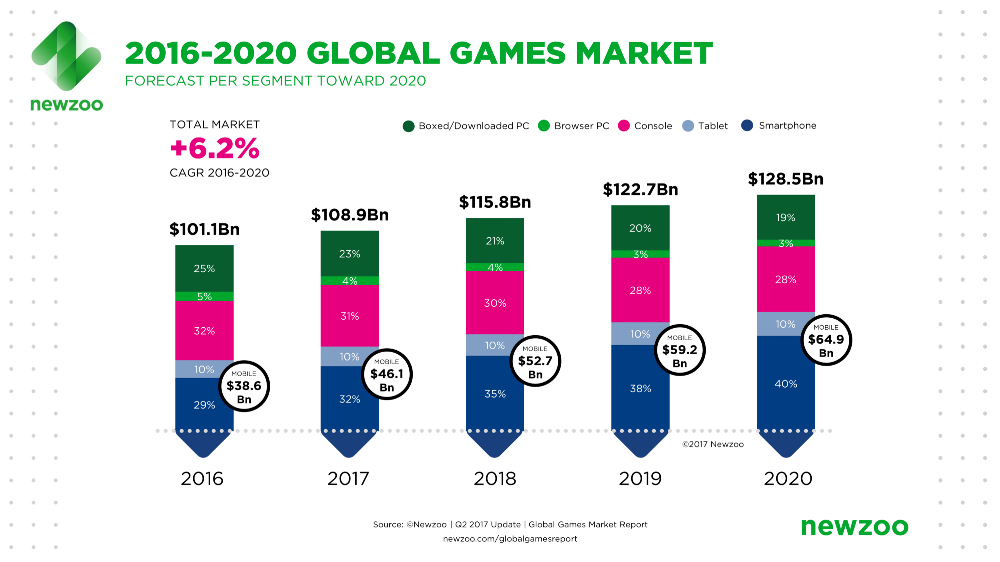
High-quality console and computer games get a lot of attention, so not many people realize that the mobile game market generates the most revenue- by a significant margin. This year smartphone and tablet games represent 42% of the game market, and the market for mobile is growing 19% year over year.
High hopes for computer-based “high-end” VR did not translate to sales this past year. Recent numbers show Oculus Rift right around 383k units sold and the HTC Vive around 667k. These numbers are well below projections and the high hopes of the industry. However, console VR has shown greater promise. Playstation VR launched in October of 2016 and has already seen nearly 2 million units sold.
The challenge for these platforms is obvious- cost (originally around $1,000 with computer upgrades), isolation of the user, being tethered to one location- usually the home.
However, many people believe that VR will see greater commercial and consumer adoption as mobile technology improves. There have been some great mobile experiences to date, but they aren’t nearly as impressive as the high-end experiences and they don’t demonstrate the full potential of the medium. The next round of smartphones will have better depth sensing capabilities, will be less likely to overheat, and will have controllers that can be used for VR experiences.
Mixed reality headsets
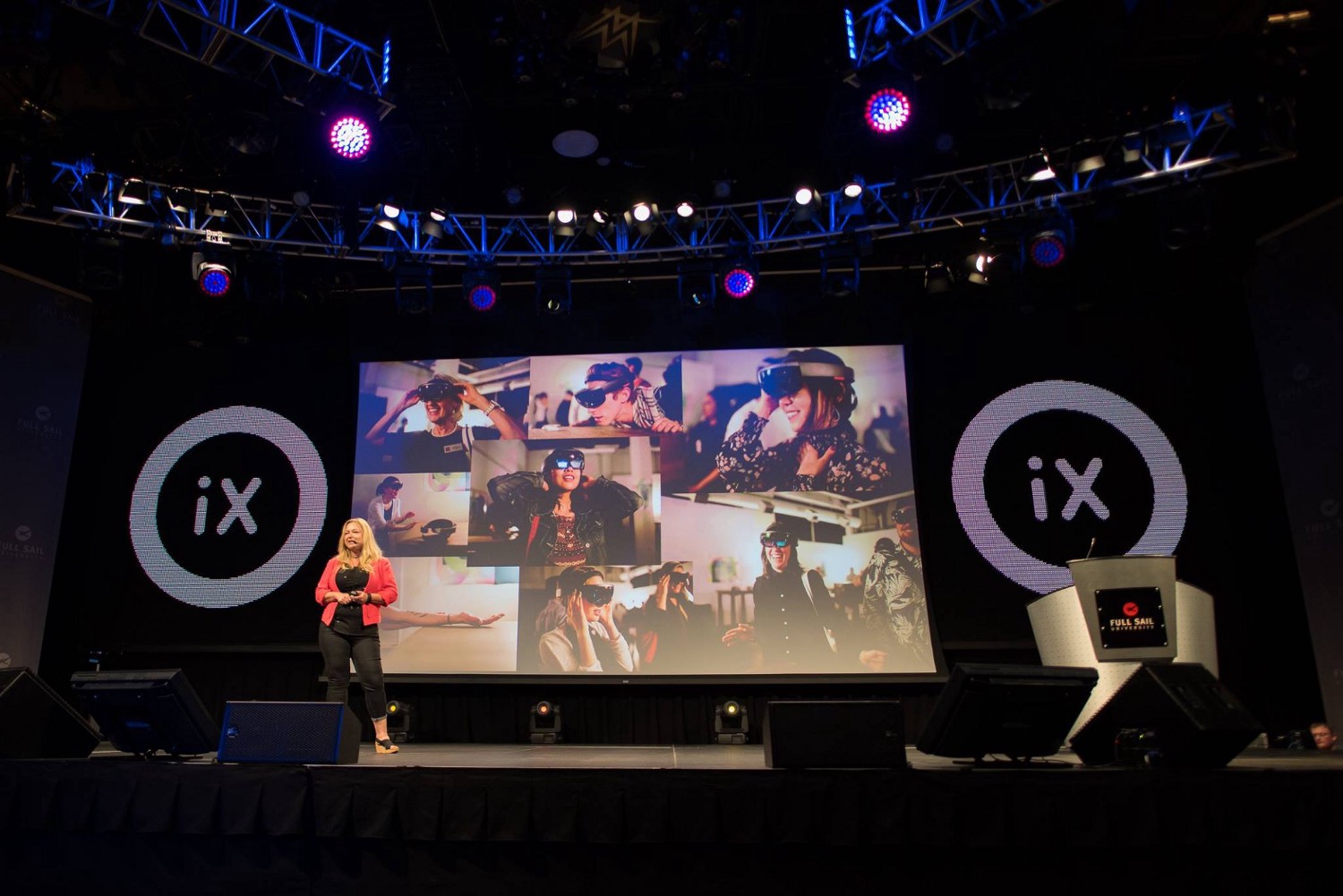
Virtual and augmented reality technologies are similar in many ways, but they’re currently separate devices used for different types of experiences. However, this may be- at least in part- because augmented reality is still new and in development.
Some companies, including Microsoft, are exploring what a combination of the two technologies looks like from both a tech and a user experience standpoint. In its exploration of a single device for delivery of both AR and VR, the company’s latest experiments have reflected a creative approach to how users of both technologies might interact, not just in the two different types of environments, but also in a single joint environment.
The mixed reality hardware appears to vary little from current virtual reality technology, but this imagining of a user experience that accommodates both areas of the technology, so similar in design and production, is interesting. Microsoft’s approach is also interesting from a communications perspective. The terms we use to describe these technologies may change and evolve, and “mixed reality” is currently often used as an umbrella term.
Another component of the conversation is the development of mixed reality platforms for mobile. When mobile VR headsets were first released some experiences popped up that used the phone’s camera to allow the user to look “through” the headsets and view AR elements. This use of one headset for both types of experience will likely increase over time with improvements in the hardware, software, and developer tools. Hopefully we’ll also see a mobile headset that is more compact and easier to carry around, which may increase user adoption.
360 Video Streaming
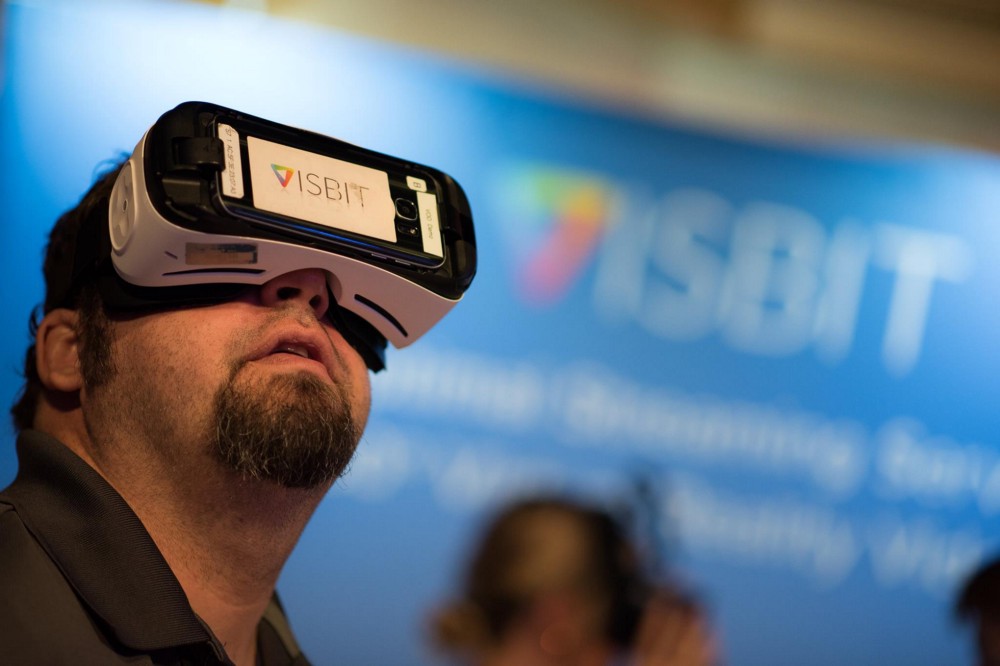
There are those who question whether or not 360 degree video should be considered virtual reality, but regardless- 360 video has certainly been one of the most successful applications of VR technology- especially for mobile. It has been used for virtual tourism, marketing and advertising, journalism, and many other video-based purposes. It puts the user right in the center of the action, allowing them to view a concert as though they were in the audience, watch a sports game from the sidelines, or enter a scene from a popular movie. The New York Times has an app just for 360 VR journalism experiences.
The next step in the evolution of this form of media, already in progress, will be the ability for users to experience events as they happen through live streaming of 360 video. Companies like Visbit had a presence at OrlandoiX this year, and there was a lot of discussion about the continued application and expansion of 360 video for live experiences. Imagine being part of a developing news story as it happens, or watching a soccer player score the winning goal in real time, from the field.
There is an increased value for the user to observe these events as they happen, and the technology is improving that will allow anyone to have a deeper level of immersion in real-time experiences.
That’s a wrap

That’s it for my iX list, though there were many other interesting areas of conversation. On the more technical side, the discussion revolved around improving artificial intelligence (AI) and machine learning for VR and AR experiences, and also on the potential of “inside-out tracking” . There were some conversations about investment trends, which have been covered extensively in the news. There was also some buzz about Google’s progress in VR. The company’s research in wireless VR headsets is interesting, though development of a quality experience to rival that of tethered headsets is still in progress.
Many thanks to the OrlandoiX team for a great conference and expo this year, to Full Sail University for the beautiful venue and support of this important local event, and to all of the sponsors and participants.
Global Game Jam 2017
I wrote a recap of this year’s Orlando Global Game Jam, hosted by Indienomicon at the Dave School. Here’s a link to the post on Medium:
https://medium.com/@necolepynn/orlando-global-game-jam-2017-1c45dcbc97b0
A Space for Makers in Orlando
Happy birthday, Factur
Orlando’s non-profit maker space, Factur, is about to celebrate two years of providing a shared work space and classes to builders, artists, and entrepreneurs.
Our maker community is small, but it’s vibrantly creative. From a robot designed to resemble an inchworm, to the world’s largest arcade cabinet, the makers in Orlando work on some impressive projects. Factur serves as a platform for new ideas, experimentation, and creative design. There are areas set up for 3D printing, laser-cutting, podcasting, electronics, sewing, woodworking, metal-cutting, ceramics, turning, engraving, painting, and whatever else members can come up with. The space and all of the tools are available 24/7, so for those people who have their best ideas late at night, there’s a place to go.
I’ve personally been working on laser-etched wood necklaces. Next I plan to tackle some geometric wood art.
Factur is located just outside of downtown Orlando, near Lake Ivanhoe and Loch Haven Park. The location is ideal for a space that encourages experimentation in the arts and sciences. It’s only blocks away from the Orlando Science Center, Orlando Museum of Art, Orlando Shakespeare Center, Mennello Museum, and Orlando Repertory Theatre. Orlando Fringe Festival takes over the park for a few weeks every year, and it doesn’t get much more experimental than that. Factur members get involved in local events throughout the year, including Otronicon at the Orlando Science Center, and Maker Faire, which will be at the Florida Fairgrounds this year.
Factur has many of Central Florida’s creative foundations represented in its membership. There are experience designers who have worked for local theme parks and attractions, space buffs who make homemade rockets, rapid prototypers who contribute to engineering projects with UCF researchers, and theater artists involved with the Orlando Shakespeare Theater. One member makes laser-cut dinosaur heads and telescopes, another makes beautiful tables and doors out of reclaimed wood. There are set builders and programmers, costume designers and welders.
More than anything, Factur is a symbol of Orlando’s growth as a creative community. We’re lucky to have a place to tinker and experiment, and to meet other people who like to create. I’m excited to see what comes out of another year.
Indie Galactic Space Jam
Here’s is my video recap of this past weekend’s Indie Galactic Space Jam. This annual game jam brings the growing Orlando game community together to develop games around advancements in space technology.
Entrepreneurship in Orlando
Does Orlando have an entrepreneurship problem?
Every year the Kauffman Foundation, a private foundation that supports entrepreneurship through programs and research, puts out an annual report on startup growth. You may already be familiar with the Kauffman Foundation- 1 Million Cups is a Kauffman program.
The annual startup report, one of many reports the Foundation publishes, examines the number of startups (“firms less than one year old employing at least one person besides the owner”) that began the previous year at a national, state, and metro level. Since many regions don’t have the capacity or the incentive to track entrepreneurial growth on their own, this is very useful research.
It’s one of the few ways we have to empirically track the growth of startups here in Orlando, and what this year’s numbers reveal is important to consider. Entrepreneurship in Orlando is on the decline, and last year the drop was particularly steep.
In fact, Orlando ranks 33rd out of the 40th largest metro areas in the country. Since the report is meant to gauge entrepreneurial growth in thriving business communities, that number should be of some concern. Even more troubling, the rank constitutes a steep drop of 12 ranking points from 2013. It was the most significant drop in rank among all the metro areas included in the study.
This is nothing new. Startup growth in Orlando has been on the decline since 2011.
The good news is that this isn’t a reflection of overall economic growth. Most experts say the trend is the result of a recovering job market and regional economic development efforts to recruit large companies from outside of town. Deloitte announced last year that it would hire for 1,000 jobs in Lake Mary, and two years ago Verizon set out to hire 750 people. Then there are other opportunities for top talent at EA, Universal, Disney, Symantec, and others.
So why should it matter that we don’t have a growing number of new companies, if the big ones are doing so well?
Well, according to U.S. Census Bureau information, all net new job growth in the United States comes from companies that are less than 5 years old. Established companies both create and eliminate jobs, often in cycles. On average, net job growth occurs only through the growth of new businesses (source).
That means, as pointed out by Tim Kane, Kauffman Foundation senior fellow in research and policy, that “because startups that develop organically are almost solely the drivers of job growth, job-creation policies aimed at luring larger, established employers will inevitably fail. Such city and state policies are doomed not only because they are zero-sum, but because they are based in unrealistic employment growth models.”
Startups are important for long-term economic growth.
We can look to one of our neighbors as a model. Miami- only three and a half hours away by car- ranked number 2 of 40 in the Kauffman study, second only to Austin. To put that into perspective, Orlando’s neighbor has a higher ratio of entrepreneurs to non-entrepreneurs than San Jose or Los Angeles- areas known as centers for startup and tech growth.
Of course, Miami has the Knight Foundation to thank for much of its recent success. The foundation has helped to fund events and resources like The Lab, Refresh Miami, Startup City: Miami, eMerge Americas, and Endeavor Miami, among others. Orlando has just begun to put similar startup infrastructure in place, and it isn’t nearly as well-funded.
How do we proceed, given what we know? How should this information impact our business culture and our discussions? What long-term effects will companies like Verizon and Deloitte have on the future of Central Florida’s economy? What resources have other cities put in place to encourage entrepreneurship? What does Orlando need to do to compete on a national and global scale?
The city will have to continue to develop resources and explore new options in the coming years, but recent growth is a good sign that the infrastructure being put into place is strong.
Internet of Things: Enchanted Objects
Last week I found out I was accepted to be part of Sherlock Holmes and the Internet of Things, an experimental Columbia University prototype that “explores new forms and functions of story.”
I’m fascinated by the location-based storytelling potential of connected devices, and I’m a fan of the Sherlock mysteries, so I was thrilled to be selected to participate.
I’m one of 250 participants in 60+ countries. The experiment is structured as a MOOC, a Massive Open Online Course, with content provided via Hackpad so that anyone can follow along.
Participants work in teams to recreate crime scenes in the style of Sherlock Holmes, with some of the items at the scene functioning as connected devices- an augmented reality mobile app that acts as a magnifying glass, revealing hidden clues; a vintage telephone with triggered audio files that lead to a key witness.
There has been a lot of attention around IOT lately. Microcomputers have become small and inexpensive enough to be accessible for a much wider range of applications, and everywhere people are envisioning new ways to ue them.
David Rose, an instructor at the MIT Media Lab, explores the storytelling potential of connected devices, comparing IOT items to the enchanted objects of fairy tales and popular stories. He uses as examples Dorothy’s ruby slippers, Harry Potter’s magic wand, and the fortune teller’s crystal ball. All of these were common items- shoes, a stick, a piece of glass- that were enhanced to become something more, something meaningful.
When I was a kid I had a toy clock that told stories. It was called Grandpa Time, and it sat beside my bed. The face of the clock looked like a friendly grandfather. He wore a colorful hat and bow tie, and at night he reminded me to brush my teeth before he told me a bedtime story.
He would make an announcement a half hour before bedtime, and at bedtime a night light would come on and a story would begin to play, told in a deep, soothing voice. It was like magic, and I loved him.
In reality, the clock was pre-set with my bed time, and its other actions were tied to that time so that they all occurred automatically. The face was made of plastic, and the stories were just cassette tapes on a timer.
Science fiction writer Arthur C. Clarke said, “Any sufficiently advanced technology is indistinguishable from magic.” When you can’t see the man behind the curtain and are willing to suspend disbelief, objects and locations can take on new depth and greater meaning.
In the coming years, this will open up new ways for people to connect with one another, share ideas, and learn about human behavior. It will enhance our connections to the places and spaces we engage with, alter the way we interact, and broaden our creative field of vision.
Sherlock Holmes and the Internet of Things will give people around the world a chance to become enchanters, and I look forward to taking part.

